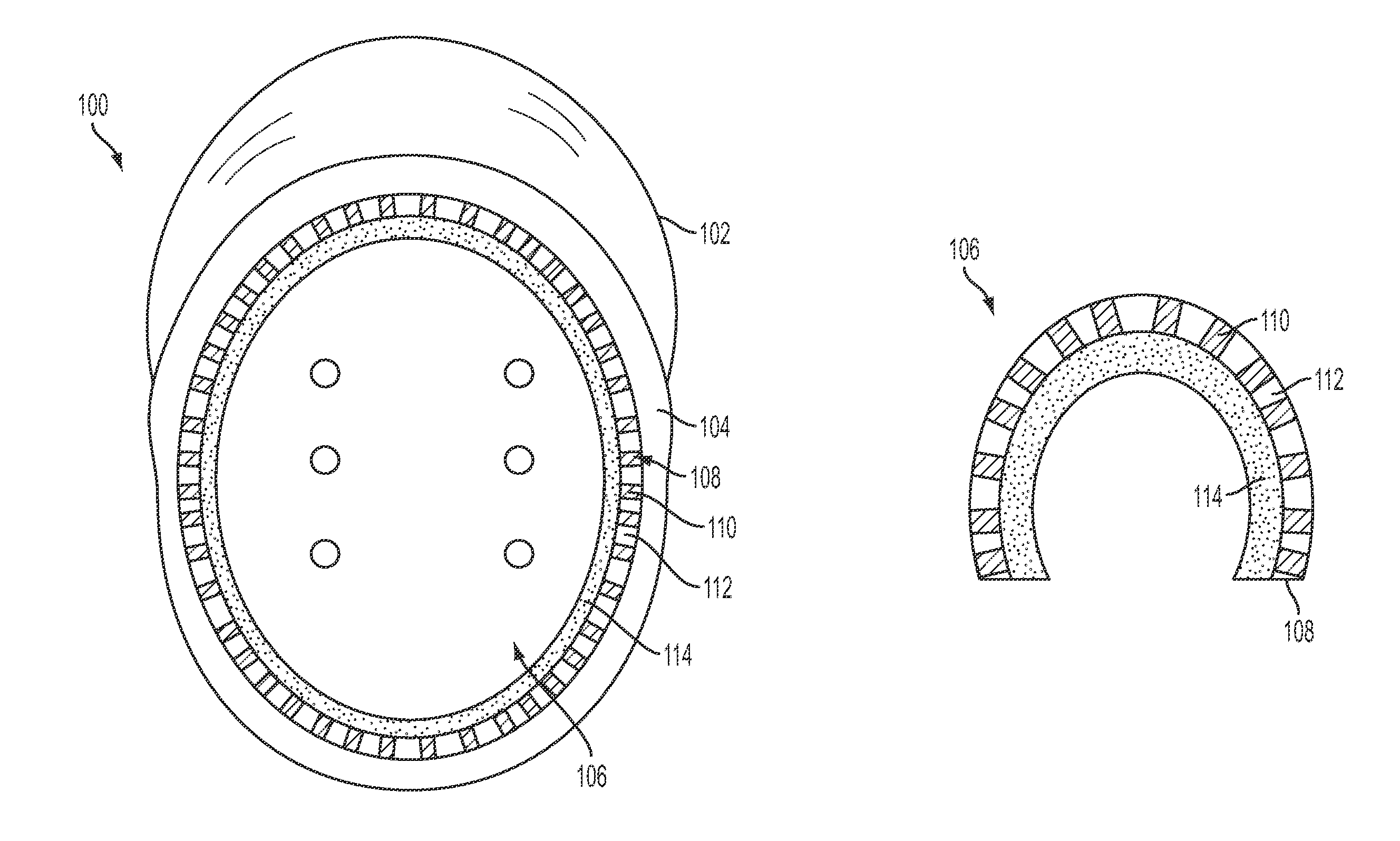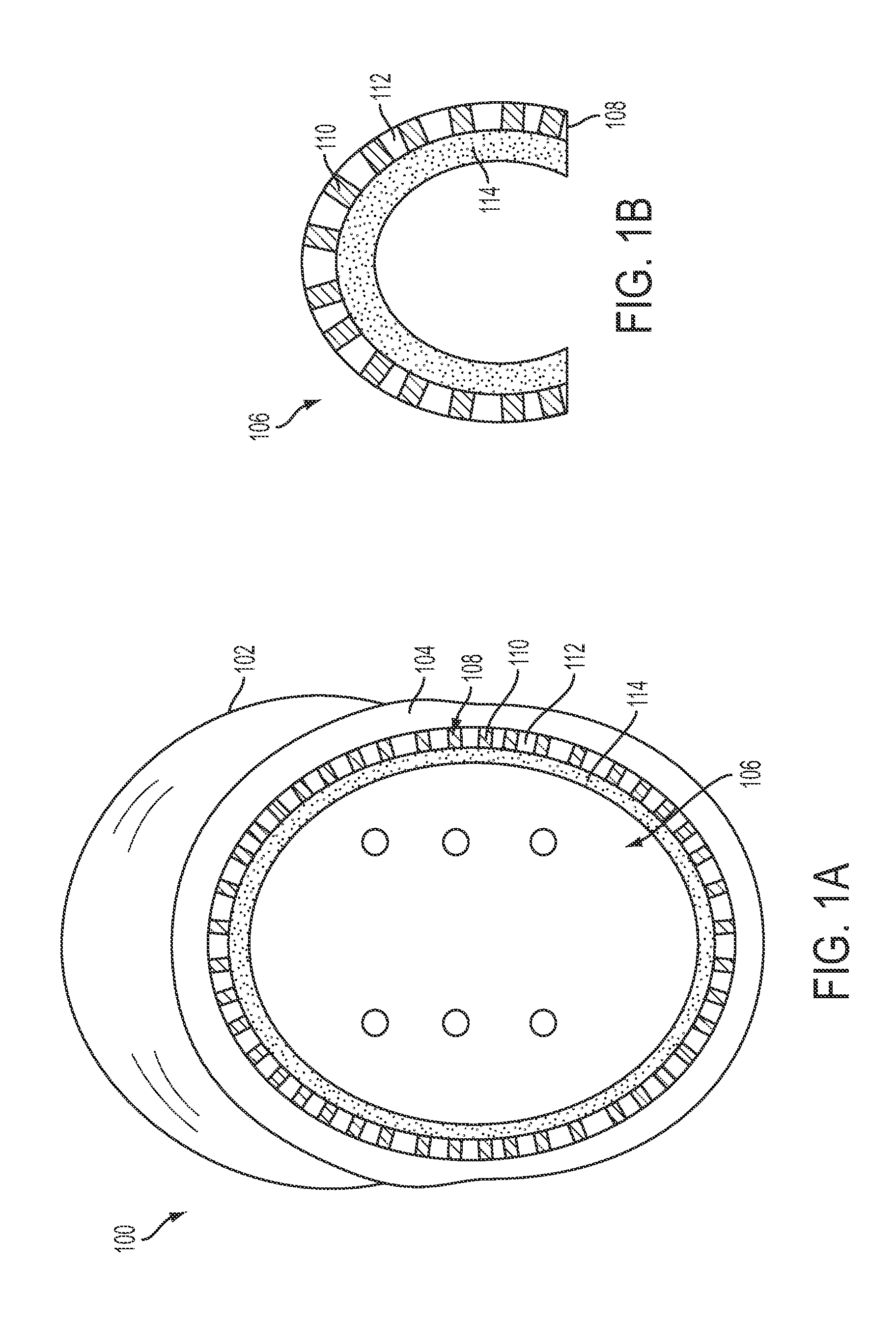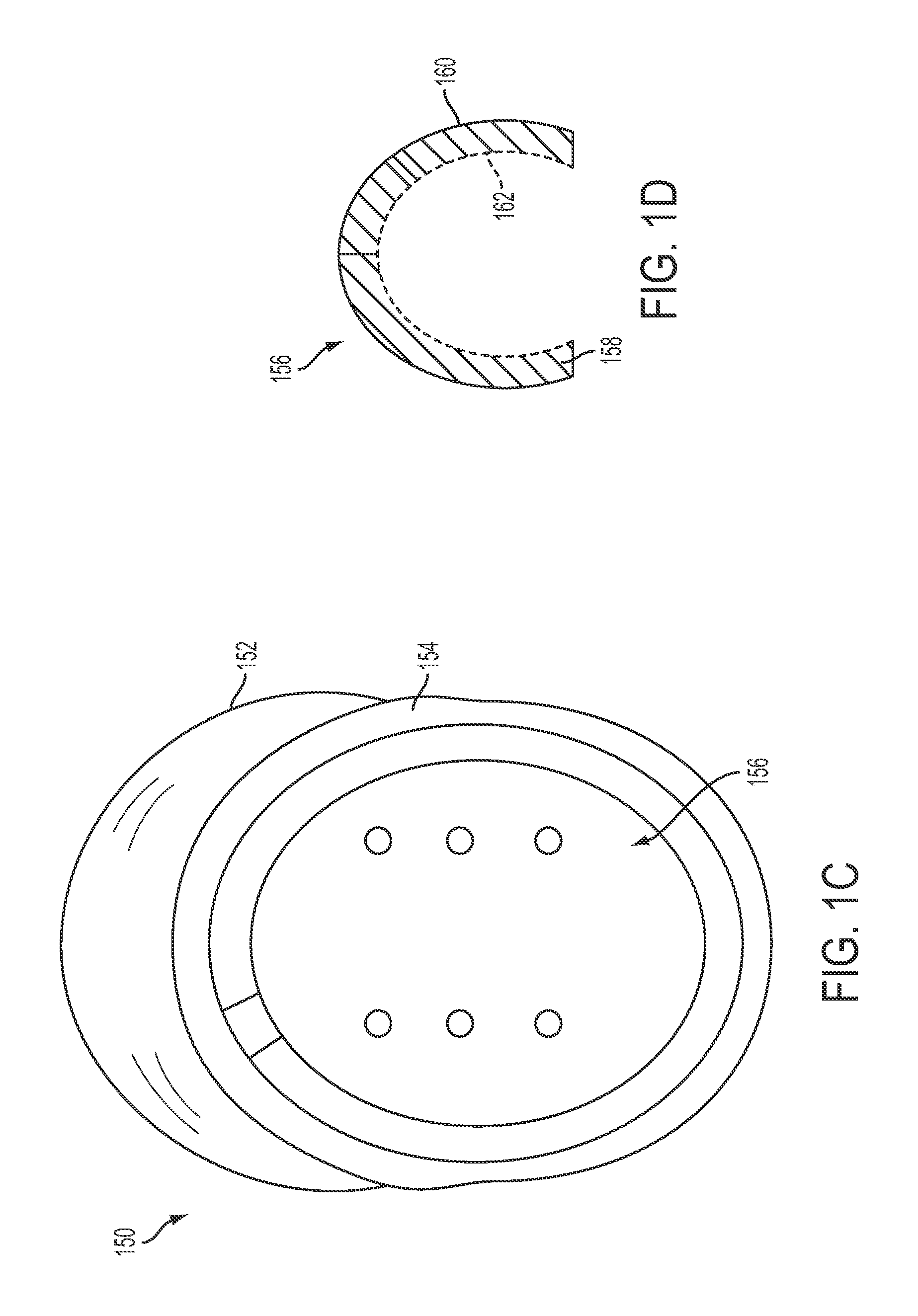Flexible Polyurethane and Polyurethane/Polyorganosiloxane Foam Materials that Absorb Impact Energy
a polyorganosiloxane foam and flexible technology, applied in the field of polyurethane foam and polyorganosiloxane foam materials, can solve the problems of reducing the impact resistance of the foam, so as to improve the impact resistance and the effect of foaming
- Summary
- Abstract
- Description
- Claims
- Application Information
AI Technical Summary
Benefits of technology
Problems solved by technology
Method used
Image
Examples
example 1
Polyurethane Foam
[0106]In one embodiment, the polyurethane foam composition was created by mixing; 20 grams of activated hardwood carbon (60 ml by volume) with 30 grams of Hydrogel-N (Polytek®) (120 ml by volume), 24 grams of Fumed Silica (Polytek®) (240 ml by volume), 2 grams of hydroxyethyl cellulose (5 ml by volume), and 0.1 ml of colorant (Polytek) to the polyol mixture containing 2000 ml of liquid solution of polyol (part B-Polytek) at room temperature. Then, 60 ml of melted and filtered Lodgepole or Pine rosin (200° C.), 10 ml of melted natural rubber (350° F.), 10 ml of melted polystyrene-block-polybutadiene-block-polystyrene (Styrene 30 wt %—Aldrich) (375° F.), 120 ml of polybutadiene synthetic rubber, 240 ml polysulfide polymer solution, and 3 ml of pure silk fibroin solution (Silktap) were added to above mixture at room temperature and stirred in the presence of 3 grams each of sulfur, stearic acid and zinc oxide. This mixture was then placed in a vacuum chamber for 5 minu...
example 2
Polyurethane / Polyorganosiloxane Foam
[0107]In another embodiment, the polyurethane / polyorganosiloxane foam composition was created. First, 2000 ml of the polyurethane foam mixture, from above, was made without the addition of MDI solution and without pouring the mixture into a mold. Then, 160 ml of polyorganosiloxane platinum catalyst solution (Soma Foama Part A-smooth-On
[0108]Inc) was added to that mixture and stirred. A separate mixture containing 1000 ml of MDI and butyl benzyl phtalate solution (Polytek part A) and 80 ml of polyorganosiloxane (Soama Foama Part B-Smooth-On Inc) is then combined and added to the mixture above and stirred vigorously for 10 seconds. The whole mixture is poured into a mold. The polymerization reaction is immediate, exothermic and give rise to hard foam with extremely high tensile strength, toughness and compression resistance with far better flame retardant quality than traditional polyurethane foam and polystyrene used for impact absorption.
examples 1 and 2
Modifications to Examples 1 and 2
[0109]Example changes include using different isocyante, polyol and / or silicone product, isoprenoid, rubber, fibroin and other reinforcers, gelling agents and additives with different methods, volume concentration and density. Concentrations by volume of the above can be varied to form a more hardened or softer foam. For harder flexible foam, 6-10% by volume of melted pine rosin can be added without affecting the polymerization foaming reaction. Alternatively, lower concentrations of pine rosin, e.g. 2.5% by volume, can be used for softer flexible foam. In addition, varied concentration by volume of activated hardwood carbon, fumed silica, hydrogel-N, cellulose, natural and synthetic rubber, silk fibroin and polysulfide polymers can be used with different concentration of melted pine rosin. Variations of these components can also give rise to softer or harder polyurethane foam to be used for different protective commercial applications.
[0110]In addit...
PUM
| Property | Measurement | Unit |
|---|---|---|
| Density | aaaaa | aaaaa |
| Density | aaaaa | aaaaa |
| Flexibility | aaaaa | aaaaa |
Abstract
Description
Claims
Application Information
 Login to View More
Login to View More - R&D
- Intellectual Property
- Life Sciences
- Materials
- Tech Scout
- Unparalleled Data Quality
- Higher Quality Content
- 60% Fewer Hallucinations
Browse by: Latest US Patents, China's latest patents, Technical Efficacy Thesaurus, Application Domain, Technology Topic, Popular Technical Reports.
© 2025 PatSnap. All rights reserved.Legal|Privacy policy|Modern Slavery Act Transparency Statement|Sitemap|About US| Contact US: help@patsnap.com



